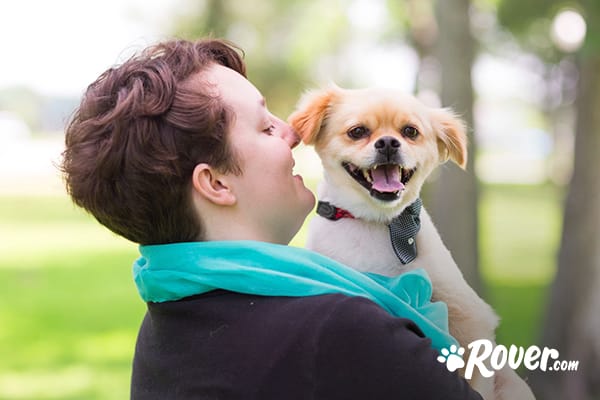- This post contains affiliate links. Read more here.
- Not a substitute for professional veterinary help.
Welcome to part 2 of our series on canine separation anxiety. Read all about the true definition of separation anxiety in part 1. This article will help put you in the right mindset for successfully training a dog with separation anxiety or isolation distress.
Overcoming separation anxiety or isolation distress is a process. If your dog suffers from one of these conditions, chances are you’ve already made a number of compromises in order to manage your dog’s anxiety when left home alone.
Even so, if you want to help your dog not just cope with separation anxiety, but learn to overcome it, more changes will be necessary.
As a trainer, I specialise in working with dogs who suffer from true separation anxiety and I won’t say that this process is easy. It’s not. But remember, it’s all temporary. As your dog begins to overcome their fear of being alone, you will slowly regain your freedom with the knowledge that your pup is relaxed and comfortable at home.
It takes a village
The key to helping a dog overcome their panic when alone is preventing them from panicking in the first place. In other words, at first, your dog can’t be left alone. It’s important to establish a baseline of constant company for these dogs prior to beginning training.
If your dog panics when alone, they can’t be left alone.
This is a daunting idea for those of us who have jobs, errands, and social engagements to attend to where dogs aren’t permitted.
For most families, to help your dog you’re going to ask for help yourself.
There are many different options for preventing your dog from being alone, even if you can’t be with them.
For dog-friendly pups, doggy day care or a group dog walker can make sure your dog is cared for while you are at work. Friends or family members that work from home or from a dog-friendly office may be willing to let your dog hang out with them during the day. Rover.com can help connect you to a dog sitter who offers dog boarding and can spend time with your dog during the day or during social engagements.
Be sure that anyone that is willing or able to help understands the situation—your dog is not to be left alone under any circumstances. It’s very important to communicate this to your pet sitter, dog walker, and any friends or family members who will be watching your dog.
Taking measures to ease stress
There are several little things you can do to decrease your dog’s stress before, and during, their training. These can help, and certainly won’t hurt, as they learn to be comfortable alone.
When combined with appropriate training, these can make a big difference for some dogs.
These are not solutions to separation anxiety or isolation distress in and of themselves. Sadly, there is no silver bullet. When combined with appropriate training, however, these supplemental aids can make a big difference for some dogs.
- DAP Collar or diffuser
DAP (dog appeasing pheromones) have a calming effect on some dogs. Both the collar and diffuser last about 30 days. - White noise machine or soothing instrumental music
White noise, whether a stand-alone device or a free app or website, will help to block out sounds from the outside world that may agitate your dog. Try playing white noise (which you can get for free on the web or as an app) alongside another device that plays soothing instrumental music. Through a Dog’s Ear produces music exactly for this purpose. - ThunderShirt
This product looks like doggy sweater but functions as a tight acupressure wrap that swaddles an anxious dog to relieve anxiety. - Calming supplements
These dietary supplements are something between a medication and a vitamin. There is good clinical research to suggest they have calming effects on some dogs, particularly after a period of 60 days. In other words, give it time!- L-Theanine (Anxiatane), made from a derivative of green tea, and Lactium (Alpha-casozepine), made from bovine milk, do not require a prescription to purchase. Please consult your vet before adding any supplement to your dog’s diet.
- Medication
Many dogs do not need medication to help overcome their isolation distress or separation anxiety, but for some it can make all the difference in the world. Please consult your vet or, better yet, a veterinary behaviourist to learn more about your options.
The bottom line
Once you have a good routine of care established for your dog, making sure they’re not alone, you’re ready to start the training process. Other measures to help reduce their stress and anxiety can help set your dog up for success during that process, as well.
Check out part 3, where we break down the steps involved in helping dogs truly overcome separation anxiety and isolation distress.



